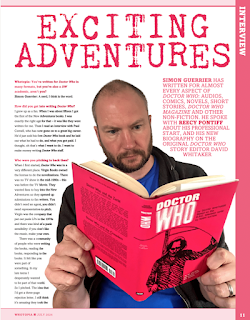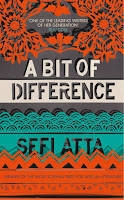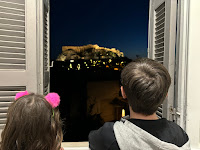"The number of nude photos needed for the Guardroom set has increased from three to six." (p. 647)
This massive, detailed day-by-day history of the making of Doctor Who is a great nerdy joy. The first volume covers the period from Monday, 2 November 1936 (the start of the BBC's regular Television service) to Friday, 4 November 1966 (the day before Patrick Troughton made his full debut as the Second Doctor, having been glimpsed in the closing moments of the episode broadcast the previous week).
In effect, it's a much expanded version of the 164-page production diary featured in Doctor Who: The Handbook - The First Doctor (1994) by David J Howe, Mark Stammers and Stephen James Walker. Indeed, Walker is the editor of this new volume, which is published by Howe's company, Telos. David Brunt looked again at the production files held at the BBC's Written Archives Centre used in that earlier version, and also looked more widely - there's an exhaustive list at the end of this volume of the files consulted for individual writers, actors and other personnel, as well as BBC departments.
I should probably declare an interest in that David's research at WAC overlapped my own for the biography of David Whitaker. We liaised a bit, compared notes and shared ideas, and I read a fairly early draft version of this book containing much less detail. There's plenty in the published volume that is new to me. In some instances, we looked at the same evidence and came to different conclusions.
For example, the book says that David Whitaker "has most likely been appointed as Doctor Who's story editor" by the time of his wedding on 8 June 1963 (p. 49). My guess is that if this were case he'd have been copied into the memo dated Monday, 10 June from head of serials Donald Wilson to everyone else involved at a senior level: assistant head of drama Norman Rutherford (head of drama Sydney Newman being away), drama department organiser Ayton Whitaker (no relation), associate producer Mervyn Pinfield, acting producer Rex Tucker and incoming producer Verity Lambert (who didn't start for another week). Maybe the story editor wasn't considered sufficiently senior for inclusion in this august company, but I make the case in my book for David Whitaker being assigned to Doctor Who on Monday, 17 June.
I'm especially impressed by pp. 104-105, where the weekly cycle of rehearsals, read-throughs and technical runs is spelled out. As far as I'm aware, there's no single document detailing this sequence and it's been deduced from scattered references in myriad different sources. Understanding that schedule illuminates much that follows. We can appreciate the frustration of actor William Russell being given a new six-page scene to learn on Thursday, 20 February 1964, the day before The Wall of Lies was recorded; it's additionally frustrating when we know that after a Thursday morning run-through of an episode for the producer and senior technical crew,
"the cast will normally be free to ... leave early that day." (p. 105)
The other thing that this book illuminates is the frantic spinning of multiple plates at any one moment. Most histories of Doctor Who - in Doctor Who Magazine or the Complete History, or on the DVDs and Blu-rays - scrutinise one story at a time. The Production History lays out how studio production on one story overlapped with filming for the next, the writing and editing of the story after that and planning and budgeting for stories months ahead. At the same time, there was press and publicity, and responses to enquiries about the episodes just aired.
Detailing the treadmill of production demonstrates, time and again, the problems caused by anyone holding things up, whether late scripts or delivery of props, or the repeated machinations of the Design Department to kill Doctor Who before it even started. It's dizzyingly, exhaustingly fraught. It's all the more impressive that Doctor Who was often so compelling and easy to see why working on this series burned through talent so quickly.
This day-by-day approach is very revealing and has made me make a whole tonne of connections. I'll give the example of one story, to show how it is in fact lots of stories and things happening at once.
On Thursday 26 May 1966, William Hartnell (Doctor Who), Michael Craze (Ben Jackson), Anneke Wills (Polly) and members of the guest cast were in Cromwell Gardens in Kensington for location filming on The War Machines. We're told that this included a high-shot filmed from upstairs at no. 50F (by arrangement with a Mrs Lessing there), and that,
"The location in Cornwall Gardens is diametrically opposite the property where Peter Purves is living at this time." (p. 603)
Hartnell spent that same morning in rehearsals on the preceding serial with Purves (Steven Taylor) and Jackie Lane (Dodo Chaplet). The Savages Episode 3 was then recorded in studio the following day. Both co-stars were being rather abruptly written out of the series, Purves the following week and Lane two weeks later in the middle of The War Machines. The prevailing atmosphere was not great, as Purves told me in 2013:
"I was very disappointed [to leave]. Later, I knew [producer] Innes [Lloyd] quite well and there was no animosity. But I didn't want to go. Bill [Hartnell] was furious. I remember him saying he'd make them change their minds. A few months later, he was gone, too." (Me, interview with Peter Purves for Doctor Who 50 Years - The Companions)
Given this, it's all the more astonishing that the production were there on Purves' doorstep, filming with his replacements.
Also present at the location filming that afternoon were William Mervyn (Sir Charles Summer), whose son Michael Pickwoad later designed more than one TARDIS and Mike Reid (uncredited soldier), later a comedian, host of Runaround and Frank Butcher in EastEnders and Dimensions in Time. There was more notable casting on this story. When the first episode of The War Machines was recorded in studio on 10 June, one of the extras in the Inferno nightclub was Alan Cassell, later the star of Australian TV's The Drifter, written by David Whitaker. Two weeks later, another extra left production during the lunch break to go for an X-ray and then didn't return for that evening's recording of Episode 3; Mike Yarwood is,
"now better known for his later TV career as an impressionist." (p. 620)
That week had been a little fraught anyway. On Monday, 20 June, the first day of rehearsals on the episode were disrupted by Hartnell "still feeling the after-effects" of filming in Cornwall the previous day for next story The Smugglers. Having completed work, he'd had a long trek back to London by train. His second-class ticket from Penzance (p. 606) seems extraordinary treatment for a veteran star of a series and came at a cost: his "travel fatigue" (as the Production Guide puts it) led to a delay in the usual schedule. On 6 July, William Mervyn wrote a letter to Lloyd suggesting that Hartnell should henceforth be transported by helicopter - for all the joking tone, it implies there had been a real problem.
Reading events day by day, I think it might have been the final straw for Lloyd. On 24 June, the day that The War Machines Episode 3 was in studio, the producer notified story editor Gerry Davis that, by arrangement with Hartnell's agent, the star would be absent from whatever episode was to be recorded on 11 February 1967 - in the event, The Moonbase Episode 2. But the problems caused to the schedule following filming in Cornwall surely affected the decision Lloyd was then involved in. On 15 July 1966, three weeks after that memo to Davis, Lloyd seems to have broken the news to Hartnell that his contract would not be extended beyond the next four-part story, The Tenth Planet. Hartnell told his wife the following day that he would be leaving Doctor Who.
I've pored over much of the original paperwork used here and thought I knew this stuff. This exhaustive diary tells a whole new story. Let's have volume 2 sharpish, please and thank you.





































